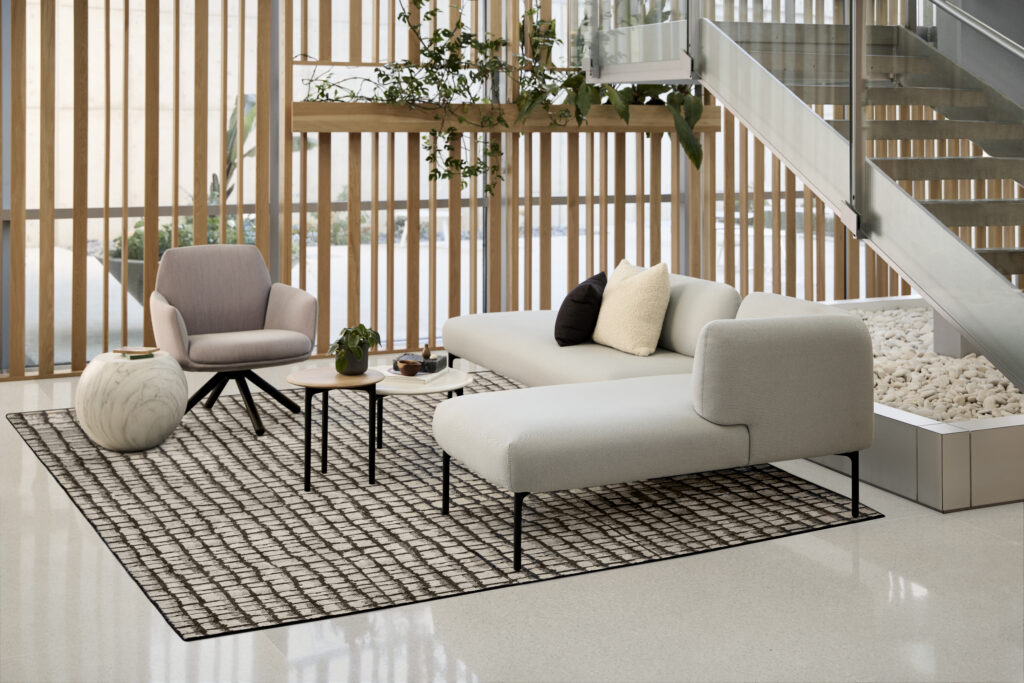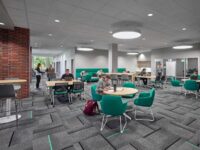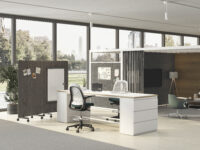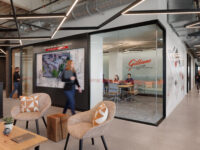Design matters more than most leaders realize. The office can be a signal for how much an organization values its employees and how much it wants to invest in their productivity and continued success. An office lacking intentional design can quietly harm the culture of the company, leaving employees disconnected. Instead, culture-driven workplace design can reinforce purpose, fuel engagement, and set the stage for sustained performance.
Signs Your Office Might Be Undermining The Company Culture
A company’s culture can be strong on paper, but if the office space doesn’t reflect that culture, employees may struggle to feel connected to it. Several warning signs suggest that the physical environment is working against company culture rather than supporting it:
- Bland walls and neutrals: Empty, colorless walls send no message about who the company is or what it stands for. Instead of inspiring employees, they create an impersonal atmosphere.
- Mismatching furniture: A patchwork of chairs, desks, and tables collected over time often signals a lack of intentionality. Without cohesive furniture selection, the office feels more like a storage space than a place built for collaboration.
- Low energy levels in common areas: If gathering spaces such as break rooms or lounges sit unused, the design likely fails to encourage connection and comfort.
- Lack of visible company identity: Offices without branded signage, mission statements, or other culture-driven design elements can leave employees disconnected from the organization’s purpose.
When employees walk into a workplace that lacks intentional office design, it sends an unspoken message: the details don’t matter here. Over time, that message translates into disengagement and cannot facilitate an optimal workplace culture.
The Link Between Environment and Engagement
The physical environment has a measurable impact on how employees feel and perform, with research showing office temperature, noise, workstation furniture, and office aesthetics were the most significant predictors of performance.
A well-designed office supports both the practical and emotional needs of employees. On a practical level, it provides functional workspaces that reduce friction and support productivity. On an emotional level, it makes employees feel proud of where they work. Pride, in turn, strengthens retention and helps build a positive company culture.
Infusing Company Culture Into Office Design

Every workplace tells a story. The question is whether the story reflects the organization’s culture intentionally or happens by accident. Culture-driven workplace design requires purposeful choices that translate abstract values into tangible experiences.
Each of the following strategic elements contributes to an environment where culture is not abstract but lived, experienced, and reinforced daily.
Intentional Furniture Selection
Choosing pieces designed for specific functions, from collaborative lounge seating to ergonomic workstations, communicates care for both productivity and well-being. Haworth commercial furniture and partnerships with other office furniture solution providers ensure access to solutions that are both durable and design-forward.
Strategic Use of Paint and Finishes
Color psychology plays a role in mood and energy. Bright accents can bring vitality, while calming tones can support focus. When designing for the senses, it’s important to find the right mix of colors that energizes without overwhelming. Leaders looking for the most impactful, yet cost-effective solution should opt for this strategy.
Storytelling through Accessories
Incorporating artwork, photography, and objects that represent company milestones or community impact brings depth and meaning to any space.
Dynamic Common Areas
Designing lounges, break rooms, and collaboration zones that feel inviting encourages employees of all generations to connect, exchange ideas, and recharge.
Custom Displays of Mission and Values
A clear reminder of “why we do what we do” reinforces purpose and strengthens commitment.
Why Formulaic Office Design Falls Short
Formulaic design often stems from convenience. While efficient in the short term, this approach fails to consider the long-term cost of disengagement. Employees working in uninspired environments are less likely to feel energized about their roles and more likely to experience burnout, contributing to a higher turnover rate, which is incredibly costly for businesses. In contrast, culture-driven workplace design is an investment that pays dividends across retention, recruitment, and performance.
The Strategic Case for Culture-Driven Design
For operations directors, facilities managers, and decision-makers, the workplace is more than square footage. The right workplace design enhances collaboration, attracts top talent, and strengthens organizational identity. By prioritizing office design that aligns with company culture, organizations set themselves apart in a competitive landscape where talent retention and engagement are top priorities.
Ready to Reimagine Your Space?
Culture is too important to be left to chance. King Business Interiors specializes in helping organizations bring their culture to life through purposeful design with our office space planning services.
Book a design consultation today and take the first step toward a workplace that inspires, engages, and fuels performance.



